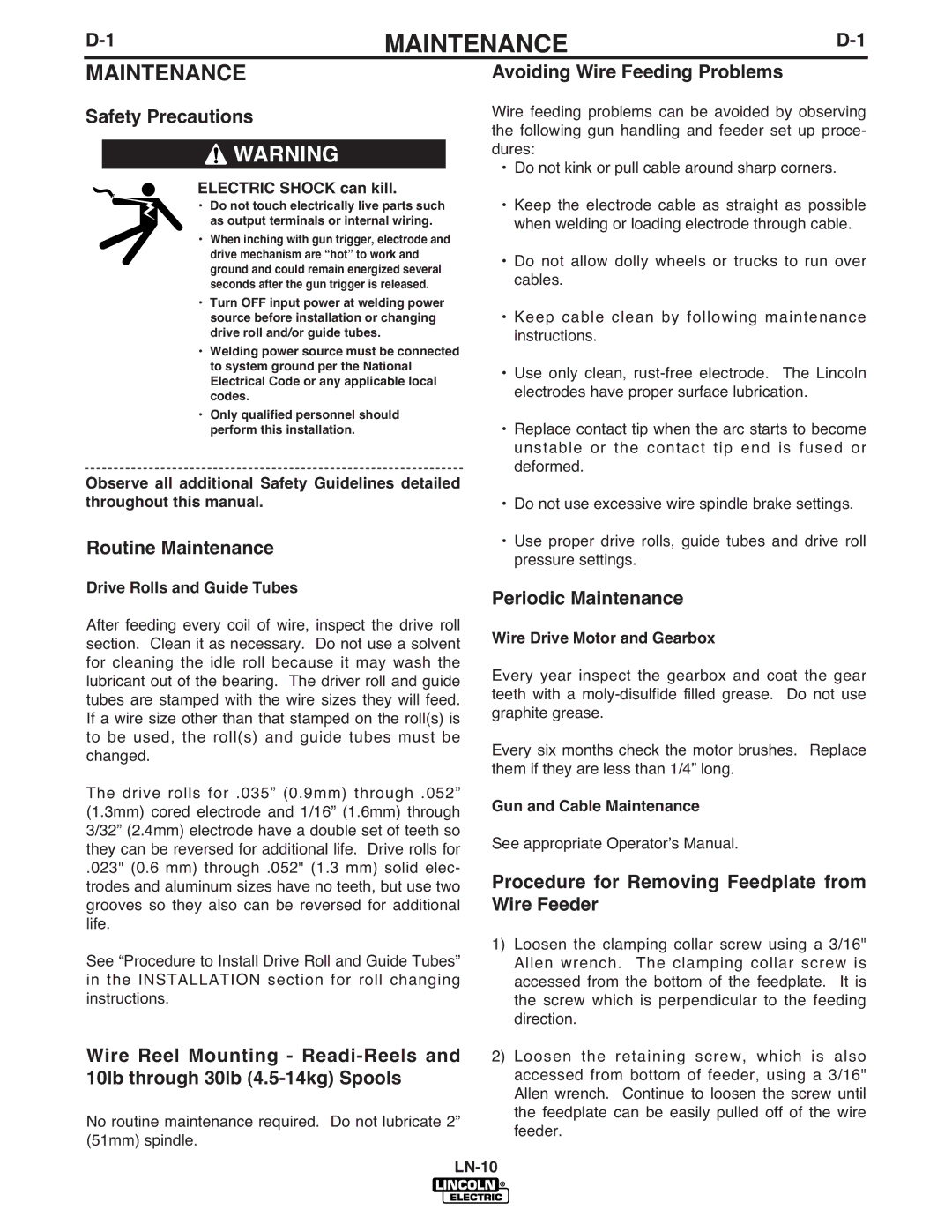IM587-B specifications
The Lincoln Electric IM587-B is a versatile and innovative welding machine designed to meet the diverse needs of professionals in industrial welding applications. This compact yet powerful machine is part of Lincoln Electric's well-established line of welding solutions and features a number of advanced technologies that enhance performance, reliability, and ease of use.One of the standout characteristics of the IM587-B is its multi-process capability. This machine supports multiple welding processes, including MIG, TIG, and stick welding, making it suitable for a wide range of materials and applications. This versatility allows users to tackle different projects without the need for multiple machines, saving both time and cost.
The IM587-B is powered by a robust inverter technology, which provides a smooth and stable arc while optimizing energy consumption. Inverter technology is known for its lightweight design and enhanced portability, making the IM587-B easy to transport to job sites or move around in the workshop. The inverter also contributes to improved duty cycles, allowing for longer periods of welding without overheating.
Another significant feature of the IM587-B is its advanced control panel, which offers intuitive operation with easy-to-read digital displays. Users can quickly adjust settings for voltage, wire feed speed, and other parameters, ensuring optimal performance for different welding tasks. This user-friendly interface is particularly advantageous for both novice and experienced welders, as it minimizes the learning curve and increases productivity.
Safety is a critical consideration in any welding operation, and the IM587-B incorporates several protective features. This includes thermal overload protection, which safeguards the machine from overheating, as well as input power protection to ensure stable operation. Additionally, the machine is designed with a durable casing that can withstand the rigors of industrial environments.
The Lincoln Electric IM587-B also boasts impressive welding capabilities, with the ability to handle a variety of materials, from mild steel to stainless steel and aluminum. Its weld quality is enhanced by features such as adjustable inductance control, which allows users to refine the arc characteristics, resulting in cleaner welds with less spatter.
In summary, the Lincoln Electric IM587-B is a highly capable welding machine that combines advanced technology, user-friendly features, and exceptional versatility. With its multi-process capabilities, lightweight inverter design, intuitive controls, and robust safety features, it is an excellent choice for professionals looking to achieve high-quality welds across various applications. This machine not only meets the demands of industry but also adapts to the evolving needs of today's welders.

